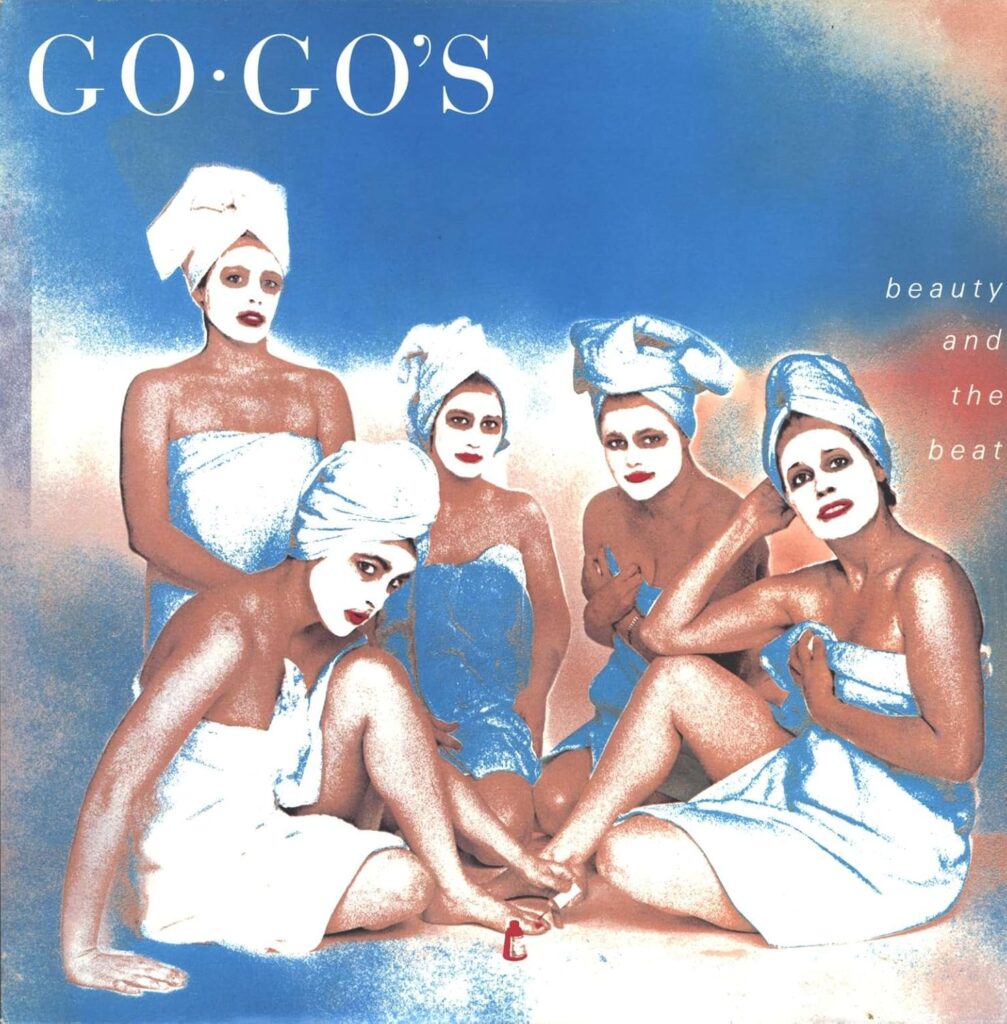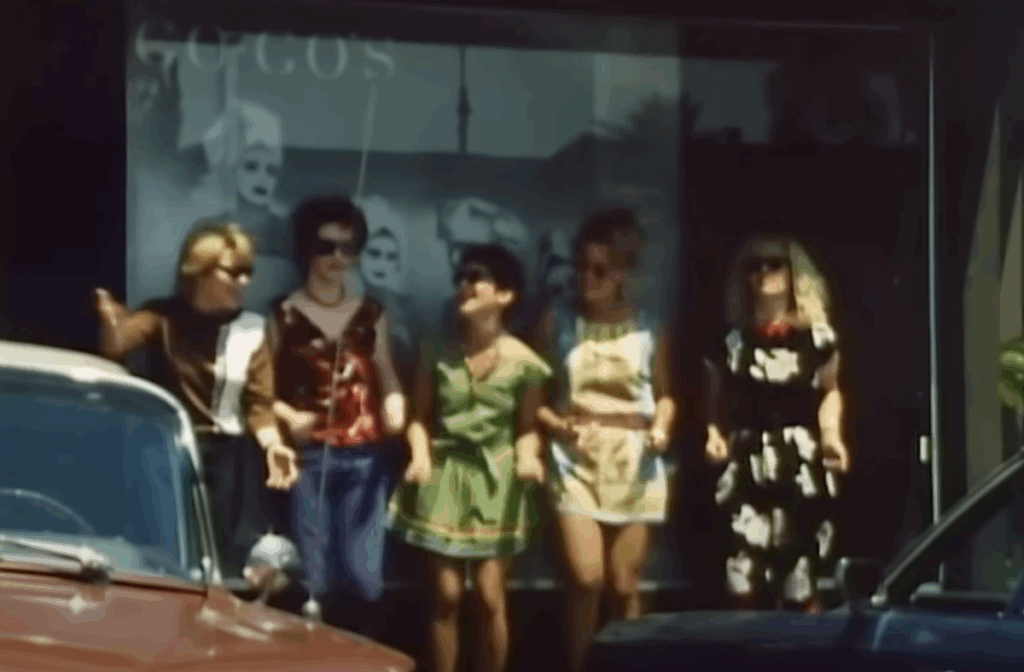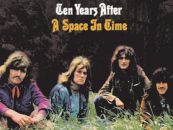 In late 1970s Los Angeles, cheap rents in run-down neighborhoods allowed dozens of local bands to live their hand-to-mouth existences while they tried to move beyond amateur status. A well-paid gig or record contract was not beyond the realm of possibility, when acts as varied as Black Flag, Wall of Voodoo and the Dickies reached beyond Southern California.
In late 1970s Los Angeles, cheap rents in run-down neighborhoods allowed dozens of local bands to live their hand-to-mouth existences while they tried to move beyond amateur status. A well-paid gig or record contract was not beyond the realm of possibility, when acts as varied as Black Flag, Wall of Voodoo and the Dickies reached beyond Southern California.
The Canterbury Suites on N. Cherokee Avenue was “the worst apartment building in Hollywood,” according to Margot Olavarria, who was playing bass in the struggling all-female Go-Go’s at the time. She told journalist Sylvie Simmons that proximity to the punk basement club the Masque and a blend of neighborhood “undesirables” made the complex a magnet for punk-and-beyond residents.
Singer Belinda Carlisle agreed, saying, “We were real freaks then. We would get assaulted and harassed constantly.” Having put in some time as a background vocalist for Black Randy and the Metro Squad (“We got to dress in Dolly Parton wigs and stuff and sing ‘I’m Black And I’m Proud’”), Carlisle had the requisite charisma, but it took a while for the band’s instrumental lineup to gel.
Lead guitarist-songwriter Charlotte Caffey had a day job doing paperwork at a mental hospital, and wrote mostly hooky, upbeat melodies despite her employment situation, and rhythm guitarist-singer Jane Wiedlin matched her with lyrics based on personal experience and the wild stories of her friends. Powerhouse drummer Gina Schock arrived from Baltimore in the summer of ’79, replacing Elissa Bello. Subbing for the ill Olavarria during a three-night gig at the Whisky-a-Go-Go in December 1979, Kathy Valentine transitioned from playing guitar with the Textones to bass with the Go-Go’s. They fired Olavarria. Carlisle later defended the move, insisting, “You couldn’t deny the fact we were a better band with Kathy—so what are you going to do?”

A still from The Go-Go’s‘ documentary by Alison Ellwood (Photo: Lynn Goldsmith; used with permission)
Their influences were all over the place, from Chuck Berry and Billie Holiday to the Beatles and Roxy Music. “None of us has the same influences,” Caffey told a Boston newspaper. “It makes us sound unique.”
“Yeah, there was no mass influence in the Go-Go’s,” agreed Wiedlin.
The year 1980 was a big one for them. In rapid succession, the group was taken under the wing of visiting English bands the Specials and Madness, briefly touring England as an opening act; released a primitive version of Caffey’s infectious “We Got the Beat” on the U.K. Stiff label; and got signed to the American independent I.R.S. Records, which was distributed by the major A&M and co-owned by the Police’s manager Miles Copeland, who offered a contract when all other L.A.-based labels passed.
Carlisle always felt her all-female band intimidated male record executives, and they often had a hard time with male concertgoers who wanted them to conform to feminine norms, musically and erotically. Print reviews sometimes mentioned whether Carlisle had gained or lost weight. “Often we were playing for skinheads who only wanted ska,” Carlisle told Smash Hits about the British tour. “Madness encouraged us a lot though. They helped us to learn that we couldn’t rely on an audience always liking us, we had to be ourselves regardless.”
Paired with a canny but unusual choice, the veteran Brill Building songwriter and producer Richard Gottehrer, who’d had a big hand in hits like the Angels’ “My Boyfriend’s Back,” the McCoys’ “Hang on Sloopy” and the Strangeloves’ “I Want Candy,” the Go-Go’s entered New York’s Penny Lane Studio to record their debut LP.
Engineer Rob Freeman, who captured all the elements crisply, is listed as co-producer for Beauty and the Beat, which was released July 14, 1981, on its slow and steady way to #1 in Billboard nine months later, powered by two hit singles, a new version of “We Got the Beat” and “Our Lips Are Sealed,” a tune written at least partly in the mail by Wiedlin and her sometime boyfriend, Terry Hall of the Specials. Sales were also boosted when The Go-Go’s were added as opening act on the Police’s 1982 Ghost In the Machine tour. Audiences were inspired by the band’s punk-meets-pop energy, and their girls-next-door sex appeal didn’t hurt. The Go-Go’s had found a winning combination, although some early fans accused them of selling out their punk ideals to please mainstream radio programmers and booking agents.
“Can you hear them?/They talk about us/Telling lies/Well, that’s no surprise” are the strong opening lyrics for “Our Lips Are Sealed,” in which a careful mosaic of guitar, bass and drum parts makes the track soar even before Carlisle’s peppy vocal enters. Wiedlin sings the bridge, and there’s a synthesizer lurking in there too. “Our Lips Are Sealed” may have been one of the songs Gottehrer suggested slowing down a bit from the faster tempos the band preferred on stage.
In the promotional video, the band members ride a convertible through sunshine-doused L.A. streets, bop on the stage of a club, visit the Trashy Lingerie store on La Cienega Blvd. and cavort in a fountain like new wave mermaids (without showing much skin). There are some clever lyrical barbs in the song (“There’s a weapon we must use in our defense/Silence”) but the overall effect is exuberant fun, recalling, well, “My Boyfriend’s Back.”
“How Much More” borrows a riff from the Doc Pomus-Mort Shuman-written Elvis hit “Marie’s the Name (His Latest Flame),” and as one of the album’s simplest songs, doesn’t quite catch fire. The lyrics are straightforward British Invasion-style sentiment evoking the Dave Clark Five or Herman’s Hermits: “Love’s in your eyes/Making me cry/Why isn’t it me?/She’s looking good/Just like I would/If it could be me.”
The Plimsouls’ leader Peter Case had a hand in co-writing “Tonite” with Caffey and Wiedlin. At a propulsive tempo it celebrates hanging out with friends, dressing up, checking out the bright billboards on Sunset Strip, etc.: “Action—gonna track it down/Gonna turn some heads…there’s no better world to be found.” The multi-voice arrangements and jangling rhythm guitar add considerable color.
“Lust to Love” fades in not unlike a Police or Elvis Costello recording of the period, with Caffey in the forefront. In the lyrics, the speaker insists, “Love me and I’ll leave you/I told you at the start…That was when the fun was in/The capture and kill/In another place and time/I did it all for thrills.” So what happens when lust becomes love? Gottehrer and Freeman make good use of echo on the drums, and at the three-minute mark there’s a guitar-sitar effect that is another callback to ’60s recording techniques. The track is further evidence of how Caffey and Wiedlin create upbeat melodies that carry a dark edge, and how their tempos can sometimes be a bit tricky to pull off.
Is that a big hint of Duane Eddy, or Ennio Morricone, in the guitar theme near the start of “This Town”? Either way it makes this celebration of L.A. sound like it belongs on the big screen. Closing out side one of the original LP, “This Town” is a compendium of everything successful about the album so far, with a confident vocal that emphasizes and invites (“This town is our town/It is so glamorous/Bet you’d live here if you could/And be one of us”), understated, meticulously arranged bass-drum-guitar interlocking parts, and plenty of air in the mix to reveal every detail. Wiedlin’s lyrics pull the rug out at the last minute: “Change the lines that were said before/We’re all dreamers, we’re all whores/Discarded stars, like worn out cars/Litter the streets of this town.”
“We Got the Beat” begins side two with Schock’s smashing snare/tom-tom combo, soon supported by Valentine’s lead bass. There’s something magical about Caffey’s guitar at about a minute in, as there’s a key change, but it’s all a setup for the middle breakdown, with more heavy drumming, hand-clapping and Carlisle whooping it up. It’s the epitome of 1981 “new wave,” freshly insisting on a good time even in musical clothes mostly borrowed from a previous generation. It’s a potent hybrid that still has crowds—like those at Coachella 2025—affirming their renewable Go-Go’s love.
With maybe a nod to the Easybeats’ “Friday on My Mind” in its opening moments, “Fading Fast” is an energetic solo composition by Caffey that the group and Gottehrer put down with several subtle layers of instrumental ingredients, including some Caffey keyboards and girl-group backing vocals to die for. The lyrics are a pretty brutal kiss-off: “You can talk about old times/They don’t mean a thing to me/You’re fading fast/Out of my memory.”
Wiedlin’s only solo writing credit, the minor-key “Automatic,” begins ominously, and as it develops sounds like nothing else on the LP. In considerable echo, Carlisle adopts an arch style, clipping consonants and channeling Marlene Dietrich. There are several dramatic stops built in, as if Wiedlin’s working off a David Bowie template. It’s a haunting performance, but seems out of place.
Valentine’s bass lines are a standout part of Caffey-Wiedlin’s “You Can’t Walk In Your Sleep (If You Can’t Sleep),” and the quasi-Bo Diddley beat provides a fit setting for Caffey’s Chuck Berry-ish soloing. The vocal arrangement, with four members weaving in and out, is tremendous. The words are about chronic insomnia (“Downed that pill hours ago/And time is passing oh so slow/Watch the clock—you’re waiting/It’s five o’clock and the world is waking”), but the music says it’ll all be fine. Maybe.
“Skidmarks on My Heart” is a love song with lyrics by Carlisle, inspired by her car-crazy brother: “I buy you cologne/You want axle grease/You say get a mechanic/I say get a shrink.” Schock leads off by borrowing the opening of the Damned’s “New Rose” (which contains its own Shangri-Las homage). Carlisle goes to the top of her range before her bandmates provide harmonies on the catchy chorus. Depending on which side of the Atlantic Ocean you dwell, Caffey’s effectively simple solo midway evokes either the Ventures or the Shadows.
In its arrangement and attitude, “Can’t Stop the World” presents itself as a kind of twin of “Skidmarks on My Heart” to end the album in high gear. Written by Valentine and originally performed by the Textones, the song might well refer to her fateful decision to come to L.A. with her Austin bandmate Carla Olson to try their luck based, literally, on a coin toss. “I gave up looking for a reason/To live with things just the way they were…Can’t stop the world/So don’t let it stop you.” Although not specifically credited in the liner notes, this is certainly one of the songs where Valentine plays guitar as well as bass. It’s punchy, has the ring of the Byrds in the guitar jangle and ends abruptly with a flourish.
In the excellent 2020 documentary on the band directed by Alison Ellwood, Carlisle says she came up with the album’s artwork concept in search of something “timeless” and “incognito.” On the front cover, the pink-and-blue-tinted women lounge in towels, their hair wrapped up, cosmetic “beauty masks” on their faces. On the reverse they enjoy bubble baths with champagne, roses, chocolates and the pulp fiction of H Is for Harlot. The inner sleeve shows each in glamour headshot poses, fully made up and coiffed.
The effect is equal parts showcase and critique, as they draw attention to just how far they’ve embraced the “star-making machinery” that in many ways is antithetical to their punk-rock roots. (They always claimed the towels they bought in the morning at Macy’s were returned for credit after the photo shoot. They weren’t yet living the highlife.)
The album stayed at #1 for six weeks, once it finished the long slog to the top. In Billboard’s end-of-1982 tally of best-selling albums, Beauty and the Beat came in at #2, only bested by Asia’s debut disc. They were nominated for a Best New Artist Grammy (losing to Sheena Easton), and scored another gold album with Vacation before the wheels started to come off in 1984. Breakups, solo careers, expensive habits, lawsuits, reunions, tell-all memoirs and a 2021 induction into the Rock and Roll Hall of Fame by superfan Drew Barrymore, are just part of the often tabloid-worthy story of the Go-Go’s. No matter the level of personal and professional drama, the musical legacy remains, with their first LP as an early peak.
Watch the Go-Go’s perform “We Got the Beat” live at the Whisky in 1980
Related: Our review of the 2020 documentary on the Go-Go’s
- Smokey Robinson & the Miracles’ ‘Going to a Go-Go’: Life of the Party - 11/11/2025
- Patti Smith’s ‘Horses’: Poetry In Motion - 11/10/2025
- Rockpile’s ‘Seconds of Pleasure’: One And Done - 11/08/2025








No Comments so far
Jump into a conversationNo Comments Yet!
You can be the one to start a conversation.